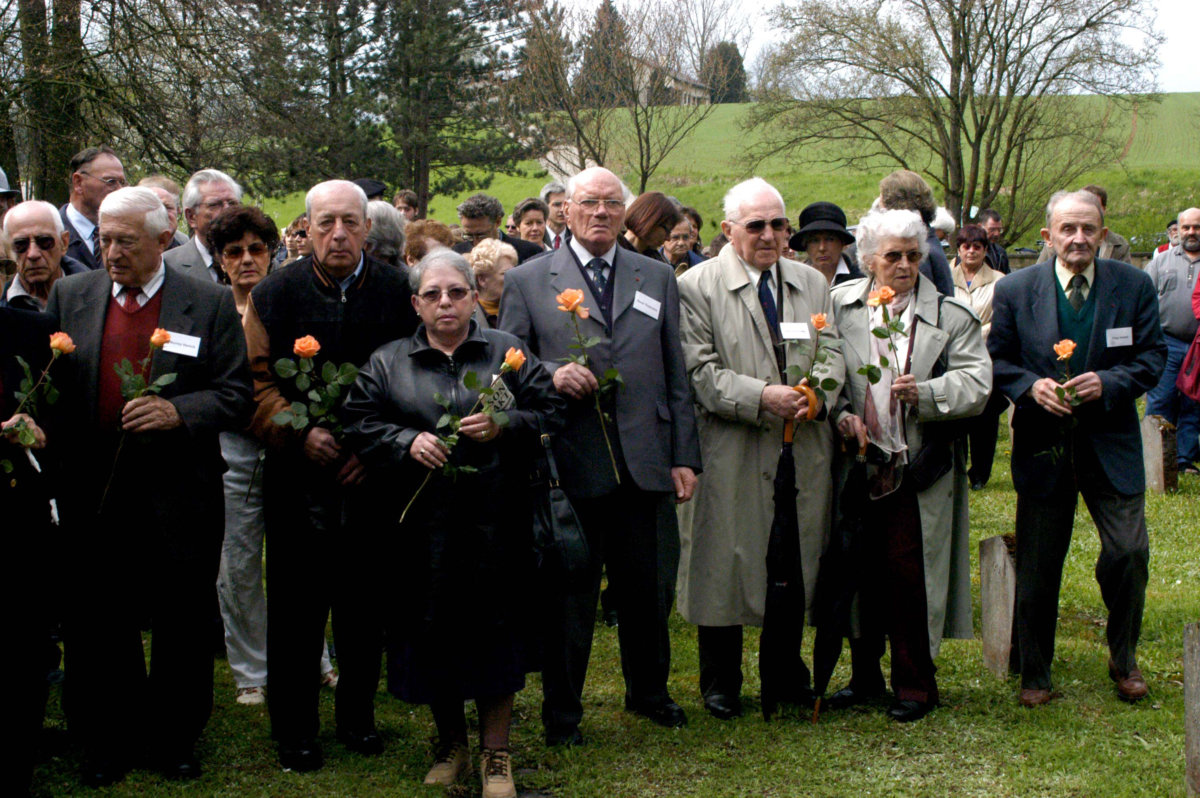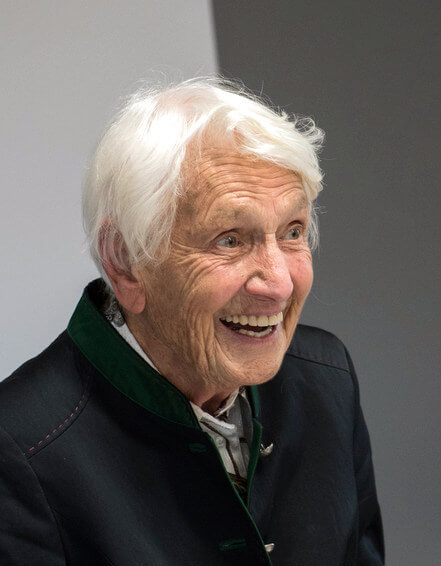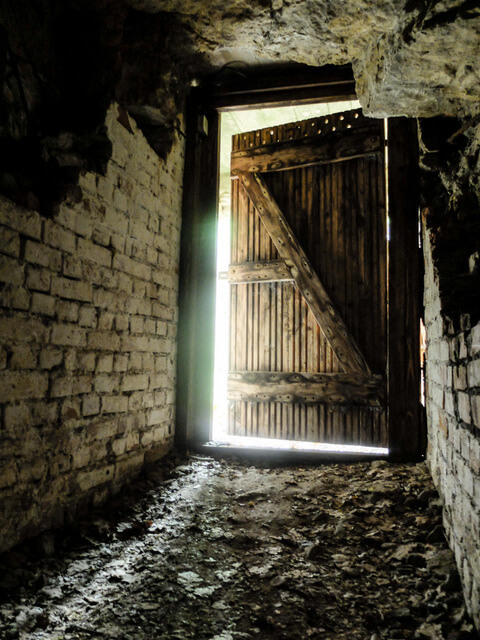Its aim was to reappraise a period of regional history in which the “concentration camp in front our front door” (publication with the same title which includes many reports of eye witnesses) reflects and testifies the crash of civilization in German history. The active members split up in different teams dealing with different topics.
Priorities were and are to establish and run a memorial, to reappraise the events of the camp historically, to liaise with similar memorials, to arrange the annual commemoration on or around the date of liberation in April, to keep in touch with survivors of the camp and their relatives and to take care of them on the spot, to develop didactic material and to release publications on the topic.

Meetings with survivors
The meetings with survivors were and are special events for the association. With the support of the City of Vaihingen the association has been able to invite survivors of the camp from different states three times so far. Members of the association visited former inmates in Poland, France and Israel.
In the meantime not only survivors but more and more descendants visit our memorial as part of their biography. This resulted and still results in numerous contacts and even friendships. Many of the former inmates assure that because of the efforts of our association they can take home a better image of the Germans.
The last meeting took place on the occasion of the 70th anniversary of the liberation of the camp.
Publication
Information on many and totally different fates of inmates have been collected and presented to the public. On the occasion of the 60th anniversary of the liberation of the camp in spring 2005 the completely revised third edition of the supplement of the historical series of the City of Vaihingen/Enz “The concentration camp in front of our front door” was published in which eye witnesses report about their experiences in the camp. Besides that the association worked out a brochure on the history of the camp for all visitors of the memorial and published it in eight editions.
In 1995 members of the association produced the twenty – minute video “A different kind of journey” with the help of the “Landesmedienzentrum Baden-Württemberg” which deals with the hardy conceivable odyssey of the Dutchman Jules Schelvis who was deported from Amsterdam via Radom to Auschwitz and finally to Vaihingen between 1943 and 1945 and which has been shown in schools for years.
The second video (2005) dealing with the experiences of Mrs. Wendelgard von Neurath/Staden on her parents` manor not far away from the camp between August 1944 and April 1945 is the report from “outside” in addition to the events inside the camp as described by Schelvis and others. („Im Blick zurück – kein Vergessen“, 2005).


Suitcase with didactic material
Besides that a team of association members developed a suitcase with didactic material which helps teachers to prepare and rework a visit to the memorial with their classes. It includes material about the period as a labour camp and as a camp for seriously ill inmates, about work in the quarry, about the liberation and the death list
This suitcase can be lent at the “Kreismedienzentren” in Vaihingen/Enz, Ludwigsburg, Pforzheim and Stuttgart. As well as the videos described above you can buy the case at the association. It is already in use in more than 50 schools.
The memorial
The main purpose of the association was to establish a memorial at the authentic historical site. For that a convincing overall concept was developed wit the help of experts. Finally the memorial could be opened in the presence of over 30 survivors and their relatives in 2005
Since then members of the association lead the most different groups around the site of the former concentration camp. About 2000 single visitors and over 60 groups, mostly classes, visit the memorial annually.
Without the voluntary work of many association members and the sponsoring of numerous companies, the City of Vaihingen, the charitable foundation of “Baden – Württemberg”, the Robert Bosch foundation, the foundations of the “Bausparkasse Wüstenrot” and the “Kreissparkasse Ludwigsburg”, the office of memorial promotion of the Federal Republic of Germany as well as the financial support of the European Commission the project would not have been able to be turned into reality.
